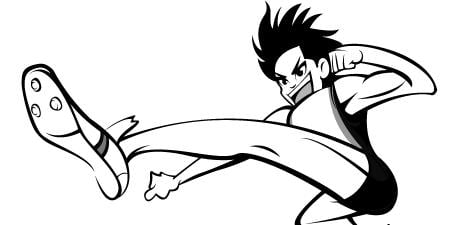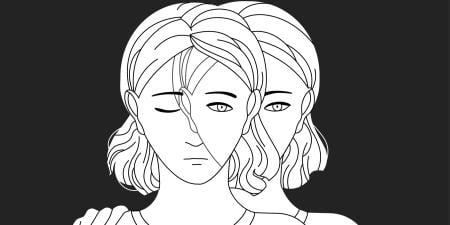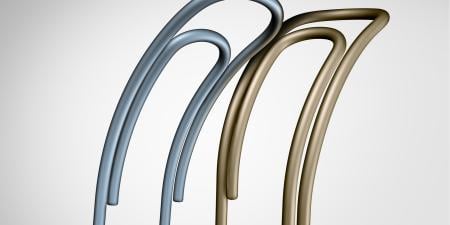Medical student mistreatment is a significant problem. After graduation, medical students report their perceptions of prior mistreatment on the Association of American Medical Colleges Medical School Graduation Questionnaire (GQ). In 2013 the percentage of students who reported having been “publicly embarrassed” was 47.2 percent, and 23.3 percent reported being “publicly humiliated” [1].
Both medical schools and hospital systems are mandated to address mistreatment effectively. A Liaison Committee on Medical Education accreditation standard mandates that “a medical education program must define and publicize the standards of conduct for the faculty-student relationship and develop written policies for addressing violations of those standards” [2], and the Joint Commission’s leadership standards specify that organizations must “provide skills-based training and coaching for all leaders and managers in relationship-building and collaborative practice, including skills for giving feedback on unprofessional behavior, and conflict resolution” [3].
However, there is a lack of evidence of best practice for prevention and management of mistreatment and inappropriate behavior. Current dedicated attempts to make changes in physician practice have failed. A 12-year study at the David Geffen School of Medicine at UCLA—which included informal and formal mechanisms of reporting and resolving incidents of mistreatment; education for students, residents, and faculty; and open discussion of the topic at all levels—failed to decrease the GQ reports of mistreatment [4]. New ways of thinking about, identifying, and responding to mistreatment are urgently needed.
Formal CME activities have little effect on physician behavior [5]. In contrast, interactive CME sessions that provide an opportunity to practice skills are successful at producing change in professional practice [4]. Interactive, experiential learning has been gradually seeping into medical education at both the student and faculty levels. This article promotes the use of experiential learning, specifically role play, to address student mistreatment in medical education and in hospital settings. The goal of role play is to develop scenarios and scripts that teach faculty, residents, and students how to recognize, address, and prevent mistreatment.
What Is Role Play?
Role play is one type of simulation that focuses attention on the interactions between people.
The idea of role-play, in its simplest form, is…asking someone to imagine that they are either themselves or another person in a particular situation. They are then asked to behave exactly as they feel that person would. As a result of doing this they, or the rest of the class, or both, will learn something about the person and/or situation. In essence, each player acts as part of the social environment of the others and provides a framework in which they can test out their repertoire of behaviors or study the interacting behavior of the group [6].
Role play underscores the importance of the social context of learning and of the medical environment.
Role Play in Medical Education
Communication-skills training is common in medical education. In the Department of Medicine at Johns Hopkins University School of Medicine, Shocket and colleagues developed an improvisational elective to enhance medical student communication skills such as mindfulness, active listening, comprehension, acceptance, responding thoughtfully, and articulating ideas clearly [7]. Through improvisation, the students were able to reflect on and improve their communication styles. Eighty-one (81) percent of students surveyed rated their enjoyment as “tremendous.” The desire to experience something new and different from the standard medical curriculum was motivation for many students (67 percent). Most students (85 percent) thought that the concepts addressed were either “very much” or “tremendously” relevant to the care of patients. Psychiatric residents also benefit from role play, which helps them gain an appreciation of their peers’ perspectives and how they affect patient care [8].
Experiential learning is especially useful to understand how emotions affect behavior or cognition. In these situations, physicians can learn specific skills and techniques to ensure that their behavior is appropriate. For example, communicating bad news is frequently taught experientially. Role play can be done in person, in a virtual setting, or on the telephone. Virtual and phone role play were found to be better at teaching medical students how to communicate bad news than in-person role play because they reduced some of the discomfort involved [9].
Role Play and Student Mistreatment
Student mistreatment is tackled at Vanderbilt University School of Medicine with skills-training programs for everyone from students to deans. In their pediatrics program, the resident retreat uses role play to teach strategies to manage “difficult communications in situations that often trigger unprofessional behaviors with attending physicians, other residents, nurse colleagues, and patients/families” [10]. Their four-hour academic leadership program for new chairs, division chiefs, and center directors also uses role play to teach skill development [10].
Student mistreatment was tackled at the Alpert School of Medicine at Brown University with the use of role play to develop videotapes for schoolwide education. The residents who participated in the creation of the videotapes greatly benefited from the exercise [11]. One resident who played the part of a medical student subjected to mistreatment spontaneously reported experiencing self-doubt, self-blaming, and reluctance to report an incident. He stated that he would never have reached that insight by reading and that the experiential nature of the exercise had been pivotal in his understanding of what it feels like to be mistreated. Another resident who played an aggressor said that, as a result of the role play, she felt better able to handle complaints of mistreatment. All residents agreed that they were now more aware of mistreatment and the personal costs to the recipient.
Guidelines for Role Play
Medical schools can use role play to develop scripted answers to common scenarios. These “scripts” can provide guidelines for program directors and medical student advisors to respond to typical reports of mistreatment.
Students’ prior experiences with role play influenced their willingness to participate. In one study, despite 22.2 percent of students reporting prior unhelpful experiences, most (96.5 percent) found that the role play was helpful. Role play that evoked strong negative emotional responses and situations that lacked realism were noted as “unhelpful” [12]. For students who are unaccustomed to working experientially, it is important to introduce role play gradually, discussing the rationale behind it and beginning with low-key exercises. Allowing adequate preparation time for role play is well worth the investment.
Guidelines for role play with medical students include the following: an emphasis on the social and interpersonal interactions as crucial for learning; adequate discussion of the specific goals for the exercise, such as improved communication with patients; assignment of roles in a way that matches the student’s experience, providing a sense of comfort in their interactions; and structured feedback [13]. The following table identifies steps for a role play exercise that tackles student mistreatment.
| Step | Activity |
|---|---|
| 1 | Discuss literature about pimping. |
| 2 | Read and discuss the case of Mary: “Mary, a fourth-year student rotating through pediatrics, was assigned to present a patient for morning report. She did not admit the patient herself and was told about this task 10 minutes before rounds began. She walked into the pediatrics library to find that the chairman was sitting in for rounds that day. Mary presented the case with the limited information provided by the resident’s history and physical. The chairman asked her questions that escalated from historical questions to more probing questions that she clearly did not know the answers to. He continued to push her until she began to cry. After rounds, the chairman apologized, stating that ‘in medicine we learn by feeling stupid sometimes. That’s the way it is’” [14]. |
| 3 | Discuss findings on mistreatment [14] and how they apply to the case. |
| 4 | Describe the purpose of role play: “The purpose of this role play is to try out this scenario and see what options there are for all sides.” Allow participants to ask questions, discuss and clarify possible roles, etc. |
| 5 | Assign the roles of chairman, Mary, and the witnesses. The leader should guide the students’ choice of roles with individual students’ personal experiences and the overall goal of the exercise in mind. Clarify that all participants are willing to play their roles. |
| 6 | Allow 5-10 minutes for each person to prepare for their role and to discuss with their partners how the role play will be enacted. |
| 7 | Role play. |
| 8 | Debrief and discuss. |
Conclusion
The transmission of abuse most commonly occurs because the perpetrator was a victim of mistreatment as a medical student and knows no other way to relate to students—“this is how it was done in my day” is a common refrain. But the mistreatment of medical students is no longer acceptable in our profession. Preventing mistreatment from being transmitted to the next generation of physicians is one of the keys to solving student mistreatment in the medical profession. Experiential teaching, such as role play, is the most effective teaching method we have for laying bare the effects of mistreatment and helping teachers practice appropriate behavior.
References
-
Association of American Medical Colleges. Medical school graduation questionnaire: all schools summary report 2013. https://www.aamc.org/download/350998/data/2013gqallschoolssummaryreport.pdf. Accessed January 31, 2014.
-
Liaison Committee on Medical Education. Functions and structure of a medical school: standards for accreditation of medical education programs leading to the M.D. degree; June 2013. https://www.lcme.org/publications/functions2013june.pdf. Accessed January 30, 2014.
-
Joint Commission. Behaviors that undermine a culture of safety. Sentinel Event Alert. 2008;40. http://www.jointcommission.org/assets/1/18/SEA_40.PDF. Accessed January 30, 2014.
- Fried JM, Vermillion M, Parker NH, Uijtdehaage S. Eradicating medical student mistreatment. a longitudinal study of one institution’s efforts. Acad Med. 2012;87(9):1191-1198.
-
Davis D, O’Brien MA, Freemantle N, Wolf FM, Mazmanian P, Taylor-Vaisey A. Impact of formal continuing medical education: do conferences, workshops, rounds, and other traditional continuing education activities change physician behavior or health care outcomes? JAMA. 1999;282(9):867-874.
-
Van Ments M. The Effective Use of Role Play: A Handbook for Teachers and Trainers. 2nd ed. London; Kogan Page: 1989.
- Shochet R, King J, Levine R, Clever S, Wright S. 'Thinking on my feet': an improvisation course to enhance students’ confidence and responsiveness in the medical interview. Educ Prim Care. 2013;24(2):119-124.
- Heru AM. Teaching psychosomatic medicine using problem-based learning and role-playing. Acad Psychiatry. 2011;35(4):245-248.
-
Hamilton G, Ortega R, Hochstetler V, Pierson K, Lin P, Lowes S. Teaching communication skills to hospice teams comparing the effectiveness of a communication skills laboratory with in-person, second life, and phone role-playing. Am J Hosp Palliat Care. 2013 Oct 4 [Epub ahead of print].
- Hickson GB. A complementary approach to promoting professionalism: identifying, measuring, and addressing unprofessional behaviors. Acad Med. 2007;82(11):1040-1048.
- Heru AM. Using role playing to increase residents’ awareness of medical student mistreatment. Acad Med. 2003;78(1):35-38.
-
Nestel D, Tierney T. Role-play for medical students learning about communication: guidelines for maximising benefits. BMC Med Educ. 2007;7:3.
- Joyner B, Young L. Teaching medical students using role play: twelve tips for successful role plays. Med Teach. 2006;28(3):225-229.
-
Association of American Medical Colleges. Appropriate treatment in medicine: a compendium on medical student mistreatment; 24. https://www.aamc.org/download/113886/data/atm-spring2000.pdf.pdf. Accessed January 31, 2014.



